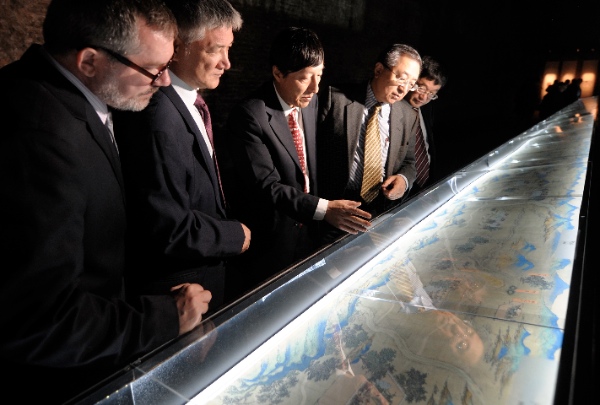
Chinese companies have signed 1,401 project contracts, along its Silk Road initiative in the first half of this year, nearly half of combined overseas contract value.
The contracts were worth $37.6 billion, up 16.7 per cent year on year, and accounting for 43.3 per cent of contracts in the period, Shen Danyang, the Ministry of Commerce (MOC) spokesman, said.
In the first half of this year Chinese companies signed overseas project contracts worth $86.7 billion, representing an increase of 6.9 per cent year on year, he said.
In March this year, China’s President Xi Jinping said he hoped its annual bilateraltrade with the countries involved in Beijing’s plan to create a modern Silk Road would surpass $2.5 trillion in a decade.
The Silk Road is the first China-led project in recent months to attract FDI from EU.
Under the so-called “One Belt, One Road” initiative, China intends to create a modern Silk Road Economic Belt and a 21st Century Maritime Silk Road to increase trade and extend its world influence.
Hungary last month signed an agreement with China officially joining Beijing’s ambitious Silk Road network. Hungary becomes the first European country to join China’s “One Belt, One Road” project.
Russia has already promised to link its new Eurasia Economic Union with China’s Belt and Road. Two countries signed railway project contract, which will connect Beijing and Moscow.
The history of the Silk Road has its roots in faraway past from around 100 B.C.
The 4,000-mile road connected China and Europe and linked ancient Chinese, Indian, Babylonian, Arabic, Greek and Roman civilizations.
Chinese plans for the Silk Road run through Central China to the northern Xinjiang from where it travels through Central Asia entering Kazakhstan and onto Iraq, Iran, Syria and then Istanbul in Turkey from where it runs across Europe, namely Germany, Netherlands and Italy.
The maritime Silk Road begins in China’s Fujian and ends at Venice, Italy. And will pass through the Russian port in Sevastopol, Crimea.
The network would include building railways, highways, oil and gas pipelines, power grids, Internet networks, maritime and other infrastructure links.
Earlier last year, China announced a $40 billion Silk Road Fund to strengthen connectivity in the Asia-Pacific region.
China’s Xinjiang province will host fifty-five cities from 17 countries, including Britain, Germany, Russia and France, for a Silk Road development forum later this month.
The “Silk Road Economic Belt Cities Cooperation and Development Forum” will be held from July 23 to 25 in the regional capital of Urumqi.